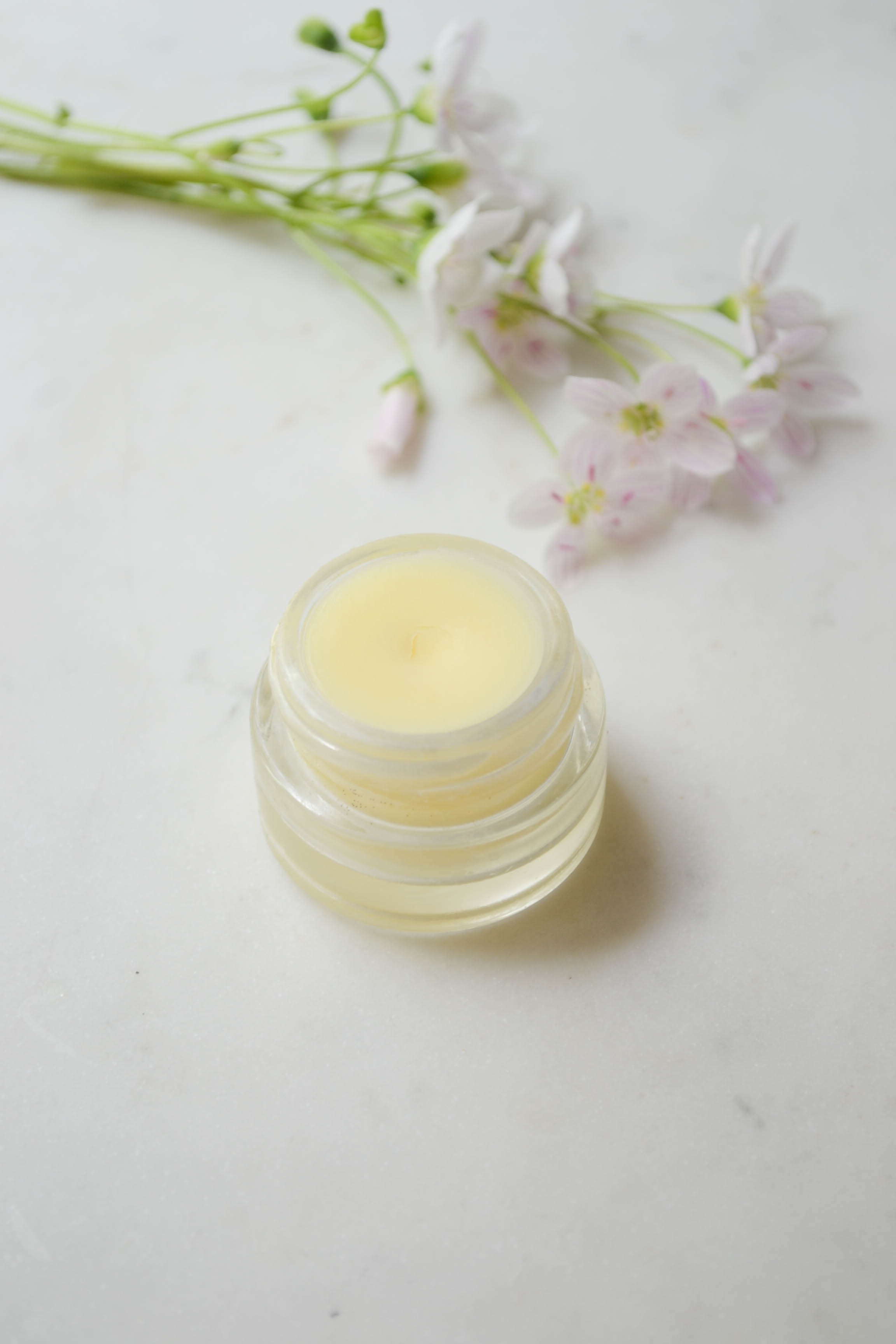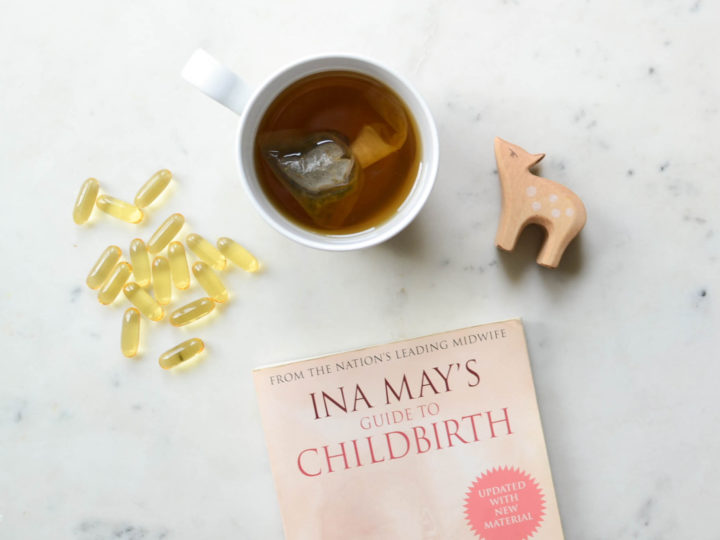
What would you think if I told you that skincare products are not regulated and all of the ingredients don’t even have to be listed on the label? Not only that, but that most of these common ingredients are scientifically proven as hormone disruptors and can even increase your risk for cancer? It is in fact, true. When I first discovered how many toxic chemicals were lurking in my skincare products I was alarmed! The average woman uses 12 products containing 168 different ingredients daily and the average man uses 6 products daily with 85 ingredients. Our skin is the largest organ in our bodies and absorbs up to 64% of what we apply on it. The purpose of this post is to educate other women and men about the dangers of some common skincare ingredients that can damage sperm, interfere with normal child development and increase risk for breast cancer as well as other cancers.
Luckily there are some amazing organizations that are making it easier to choose safer skincare products like the Environmental Working Group, Think Dirty, Beauty Lies Truth and Campaign For Safe Cosmetics. The Campaign for Safe Cosmetics released this video quite awhile ago but I would still recommend you watch it. The EWG has put together a list of twenty ingredients that should be avoided and I have included them below. They also have a great database where you can search over 66k skincare products to see how they rate based on any studies available on their ingredients.
I have also included my clean make-up routine below. This post is not sponsored, these are simply companies that I trust and products that have worked for me.
BHA: The National Toxicology Program classifies butylated hydroxyanisole (BHA) as “reasonably anticipated to be a human carcinogen.” It can cause skin depigmentation. In animal studies, BHA produces liver damage and causes stomach cancers such as papillomas and carcinomas and interferes with normal reproductive system development and thyroid hormone levels. The European Union considers it unsafe in fragrance. It is found in food, food packaging, and personal care products sold in the U.S.
Boric acid and Sodium borate: These chemicals disrupt hormones and harm the male reproductive system. Men working in boric acid-producing factories have a greater risk of decreased sperm count and libido. In animals, high doses cause testicular damage to mice, rats, and dogs. Both the European Union and Canada restrict these ingredients in body care products made for children under three years of age and require that products containing these ingredients be labeled as not appropriate for broken or damaged skin. No similar safety standards are in place in the United States. The cosmetic industry’s own safety panel states that these chemicals are unsafe for infant or damaged skin, because they can absorb readily into the body. Despite this guidance, boric acid is found in some diaper creams.
Coal tar hair dyes and other coal tar ingredients (including Aminophenol, Diaminobenzene, Phenylenediamine): Coal tar, a byproduct of coal processing, is a known human carcinogen, according to the National Toxicology Program and the International Agency for Research on Cancer. Hair stylists and other professionals are exposed to these chemicals in hair dye almost daily. Europe has banned many of these ingredients in hair dyes. While FDA sanctions coal tar in specialty products such as dandruff and psoriasis shampoos, the long-term safety of these products has not been demonstrated.
Formaldehyde: A potent preservative considered a known human carcinogen by the International Agency on Research on Cancer. Formaldehyde, also an asthmagen, neurotoxicant and developmental toxicant, was once mixed into to many personal care products as antiseptic. This use has declined. But some hair straighteners are based on formaldehyde’s hair-stiffening action and release substantial amounts of the chemical.
Formaldehyde releasers – Bronopol, DMDM hydantoin, Diazolidinyl urea, Imidzaolidinyl urea and Quaternium-15: Cosmetics preservatives that slow form formaldehyde to kill bacteria growing in products. Formaldehyde is a known human carcinogen. The preservatives and the formaldehyde they generate can trigger allergic skin reactions. Formaldehyde releasers are widely used in US products. Not surprisingly, more Americans develop contact allergies to these ingredients than Europeans.
Fragrance: It may help sell products from face cream to laundry detergent, but do you know what’s in it? Fragrances are in everything from shampoo to deodorant to lotion. Federal law doesn’t require companies to list on product labels any of the chemicals in their fragrance mixture. Recent research from EWG and the Campaign for Safe Cosmetics found an average of 14 chemicals in 17 name brand fragrance products, none of them listed on the label. Fragrances can contain hormone disruptors and are among the top 5 allergens in the world. Our advice? Buy fragrance free wherever possible.
Hydroquinone: A skin bleaching chemical that can cause a skin disease called ochronosis, with blue-black lesions that in the worst cases become permanent black caviar-size bumps. In animal studies, hydroquinone has caused tumor development.
Lead: A neurotoxin in popular hair dye Grecian Formula 16 and other black hair dyes for men. Lead from hair dyes travels from hair to doorknobs, cabinets and other household items, where children can ingest it.
Methylisothiazolinone, methylchloroisothiazolinone and benzisothiazolinone: Preservatives, commonly used together in personal care products, among the most common irritants, sensitizers and causes of contact allergy. Lab studies on mammalian brain cells suggest that methylisothiazolinone may be neurotoxic.
Nanoparticles: Zinc oxide and titanium dioxide nanoparticles appear to be among the safer and more effective active ingredients in U.S.-marketed sunscreen creams because they do not penetrate the skin. But avoid sprays and powders containing these nanoparticles, which could penetrate your lungs and enter your bloodstream. Many other nanoparticles have received very little testing, yet they readily penetrate the skin and contaminate the body. Cosmetics manufacturers are not required to disclose the presence of nanoparticles in products.
Oxybenzone: Sunscreen agent and ultraviolet light absorber, found in the bodies of nearly all Americans, according to the U.S. Centers for Disease Control and Prevention. In human epidemiological studies, oxybenzone has been linked to irritation, sensitization and allergies. A study of 404 New York City women in the third trimester of pregnancy associated higher maternal concentration of oxybenzone with a decreased birth weight among newborn baby girls but with greater birth weight in newborn boys. Studies on cells and laboratory animals indicate that oxybenzone and its metabolites may disrupt the hormone system.
Parabens (specifically Propyl-, Isopropyl-, Butyl-, and Isobutyl- parabens): Parabens are estrogen-mimicking preservatives used widely in cosmetics. The CDC has detected parabens in virtually all Americans bodies. According to the European Commission’s Scientific Committee on Consumer Products, longer chain parabens like propyl and butyl paraben and their branched counterparts, isopropyl and isobutylparabens, may disrupt the endocrine system and cause reproductive and developmental disorders.
PEGs/Ceteareth/Polyethylene compounds: A family of conditioning and cleaning agents that go by many names. These synthetic chemicals are frequently contaminated with 1,4-dioxane, which the U.S. government considers a probably human carcinogen and which readily penetrates the skin. Cosmetics makers could easily remove 1,4-dioxane from ingredients, but tests documenting its common presence in products show that they often don’t.
Petroleum distillates: Petroleum-extracted cosmetics ingredients, commonly found in mascara. They may cause contact dermatitis and are often contaminated with cancer-causing impurities. They are produced in oil refineries at the same time as automobile fuel, heating oil and chemical feedstocks.
Phthalates: A growing number of studies indicate that chemical family damages the male reproductive system. Pregnant women should avoid nail polish containing dibutyl phathalate. Everyone should avoid products with “fragrance” indicating a chemical mixture that may contain phthalates.
Resorcinol: Common ingredient in hair color and bleaching products; skin irritant, toxic to the immune system and frequent cause of hair dye allergy. In animal studies, resorcinol can disrupt normal thyroid function. The federal government regulates exposures to resorcinol in the workplace, but its use is not restricted in personal care products.
Toluene: Volatile petrochemical solvent and paint thinner and potent neurotoxicant that acts as an irritant, impairs breathing and causes nausea. A pregnant woman’s exposure to toluene vapors during pregnancy may impair fetal development. In human epidemiological and animal studies, toluene has been associated with toxicity to the immune system. Some evidence suggests a link to malignant lymphoma.
Triclosan & Triclocarban: Antimicrobial pesticides in liquid soap (triclosan) or soap bars (triclocarban), very toxic to the aquatic environment. Often found as contaminants in people due to widespread use of antimicrobial cleaning products. Triclosan disrupts thyroid function and reproductive hormones. American Medical Association and the American Academy of Microbiology say that soap and water serves just as well to prevent spread of infections and reduce bacteria on the skin. Overuse may promote the development of bacterial resistance.
Vitamin A compounds (retinyl palmitate, retinyl acetate, retinol): Vitamin A is an essential nutrient but not necessarily safe for use on skin. Studies show that when applied to sun-exposed skin these compounds can increase skin sensitivity. Furthermore sunlight breaks down vitamin A to produce toxic free radicals that can damage DNA and hasten skin lesions and tumors in lab animals. These ingredients are widely used in sunscreens, skin lotions, lip products and makeup. EWG urges consumers to avoid leave on skin and lip products with vitamin A.
Animal-based ingredients: Many consumers are asking manufacturers tough questions about ethical sourcing of their ingredients. Vegetarians, vegans, and people concerned about animal welfare frequently seek to avoid ingredients derived from animals. However a number of animal-based substances are found in cosmetics, and might not be clearly labeled as such. If you are concerned about avoiding animal products the best bet is to choose brands claiming to be vegetarian or vegan or labeled with the PETA and Leaping Bunny logos.

my clean make-up routine
MOISTURIZER – I’ve been using rosehip oil as a moisturizer for eight years and I swear by it. It replenishes moisture and revitalises the appearance of your skin, leaving it softer, healthier and more radiant as well as smoothing out wrinkles. It has a high content of vitamin C, in the form of essential fatty acids and contains 77% linoleic and linolenic acids. I’ve been buying Aura Cacia organic rosehip oil from Thrive Market for less than eight dollars.
FACE – I don’t like make-up to feel or look like it’s caked on or like my skin can’t breath which is why I love “un” cover-up from RMS Beauty so much! With a coconut oil base, it is lightweight and hydrating while providing even coverage for flawless looking skin. I use color 33 for my Sicilian skin tone to give a gauge of the colors in case you are interested.
CHEEKS – RMS Beauty also makes a lovely “lip to cheek” cream which I use as blush. The color I’ve been using is called ‘promise’ but they have so many colors to choose from!
EYES – When I first tried Honest Co mascara (got a free one with my diaper subscription) I didn’t like it but after the second try I have actually decided I like it a lot. I wish the brush was a but different because I feel like it clumps my lashes together a bit but otherwise it stays on nice and doesn’t end up all over your face!
LIPS – I never wear color on my lips because I just prefer a more natural look. My favorite lip balms are the calendula & vanilla from Bodyceuticals, Mongo Kiss vanilla honey lip balm and Dr. Hauschka’s lip balm. My sister has also been making me a lovely homemade coconut oil lip balm and let me share the recipe below.
SUNSCREEN – I have used two different non-nano zinc oxide sunscreens, one from Raw Elements and another from Badger. I like them both but my husband seemed to have a reaction to the one from Raw Elements so we stick with Badger for our family.
NAILS – I haven’t tried all that many but I’ve used Priti NYC and like it! Doesn’t stay on for more than a week but also doesn’t wash off the day you paint your nails.

homemade coconut oil peppermint lip balm
ingredients
1/4 cup coconut oil
1 tbsp and 1 tsp of beeswax
essential oils or extract of your choice (i used 35 drops of peppermint)
directions
melt the coconut oil and beeswax together in a small saucepan on low heat. add the essential oils or extract of your choice. using an eye dropper (or a small spoon), drop into container of your choice and allow to cool.




